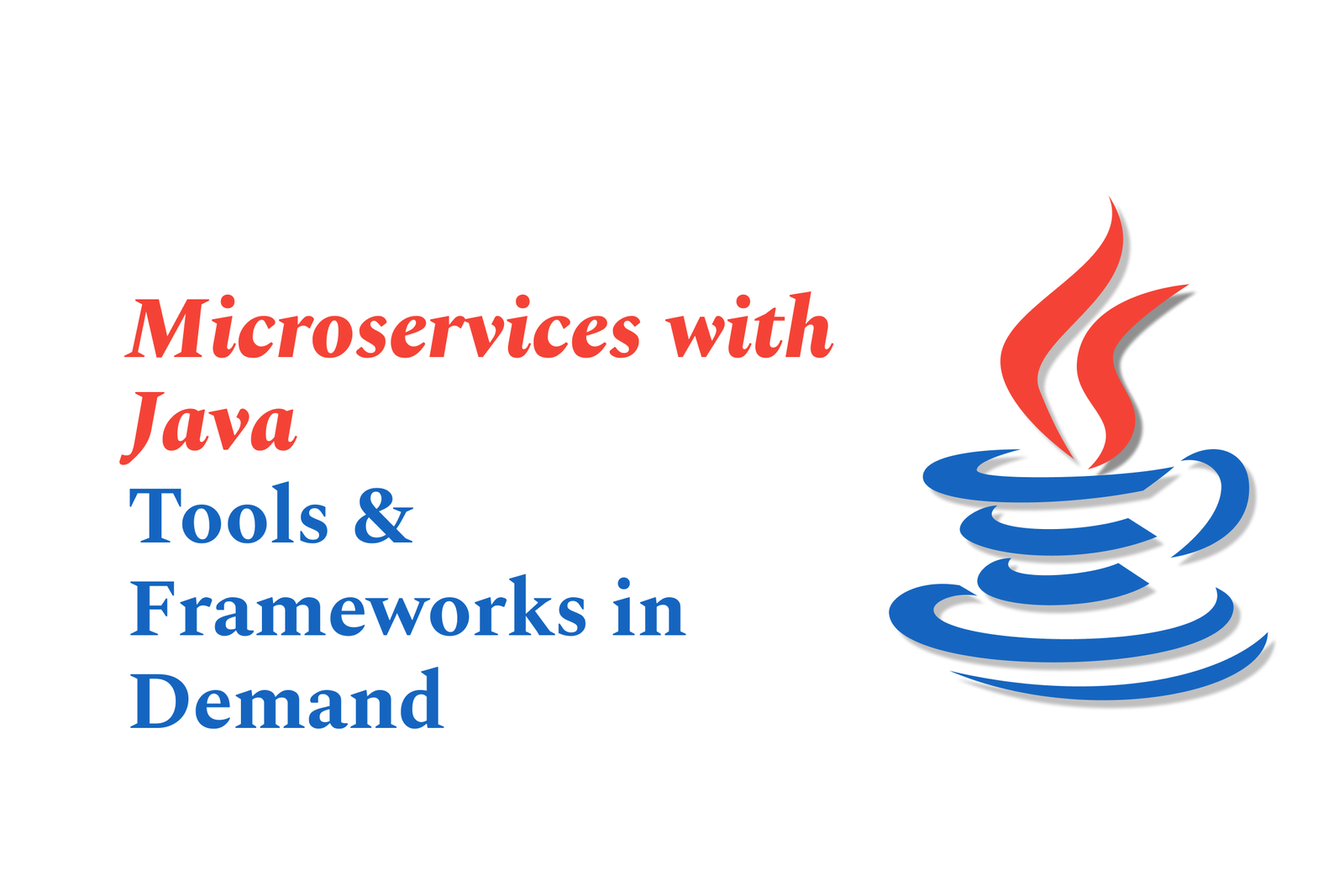Microservices with Java: Tools & Frameworks in Demand
Microservices with Java involves building scalable, modular applications using lightweight, independent services. Popular tools and frameworks in demand include Spring Boot and Spring Cloud, enabling rapid development, service discovery, and robust cloud-native microservice architectures.
Microservices with Java: Tools & Frameworks in Demand
1 ) Understanding Microservices Architecture
Microservices architecture is a software development style that structures an application as a collection of small, autonomous, loosely coupled services. Each service is independently deployable and typically organized around business capabilities. This architecture enhances modularity, scalability, and agility, allowing small teams to own and manage individual services effectively.
2 ) Key Characteristics of Microservices
Componentization via Services: Dividing functionality into discrete services.
Organized Around Business Capabilities: Services correspond to specific business functions.
Independent Deployment: Each microservice can be updated and deployed without affecting the whole system.
Decentralized Data Management: Each service manages its own data, avoiding central databases.
Technology Diversity: Services can use different languages, frameworks, and data stores best suited to their needs.
Design for Failure and Evolutionary Design: Systems are designed to handle failures gracefully and evolve over time.
3 ) Benefits and Challenges
Benefits: Improved scalability, agility, resilience, and the ability to use diverse technologies.
Challenges: Increased complexity in distributed communication, eventual consistency, operational overhead, and the need for mature DevOps practices.
4 ) Java and Microservices
Java, particularly with frameworks like Spring Boot and Spring Cloud, remains a dominant platform for building microservices. Its extensive ecosystem, community support, and well maintained tools make Java a preferred choice among enterprises for developing and deploying microservices efficiently.
5 ) Popular Java Tools & Frameworks for Microservices
Spring Boot: Simplifies microservice development with rapid setup and minimal configuration. It allows developers to build standalone, production grade services easily.
Spring Cloud: Provides tools for service discovery, configuration management, circuit breakers, and distributed tracing—key for managing microservice architectures.
Java IDEs: Key Integrated Development Environments (IDEs) like Eclipse, NetBeans, IntelliJ IDEA, and Visual Studio Code support Java microservice development with rich plugins and debugging tools.
Application Servers: Lightweight servers like Apache Tomcat and more complex ones like IBM WebSphere cater to varied deployment needs.
6 ) Supporting Technologies
Container Orchestration: Kubernetes enables deployment, scaling, and management of containerized microservices.
API Gateways: Manage, secure, and route traffic between clients and microservices.
DevOps & Observability: Continuous integration and delivery pipelines, along with monitoring tools, support fast, reliable microservices deployment.
7 ) Industry Usage and Adoption
Microservices are widely adopted across sectors such as e commerce, streaming services, and financial services to increase flexibility, scale efficiently, and innovate rapidly by decoupling complex applications into manageable services.
8 ) Conclusion
Microservices offer significant advantages for building scalable and maintainable applications in modern cloud environments. Java remains a strong contender in this space due to its mature ecosystem and toolsets. Selecting the right frameworks and tools, alongside a deep understanding of the architectural principles, is critical for successful microservice implementations.
https://justacademy.in/news-detail/how-flutter-is-dominating-cross-platform-app-development
https://justacademy.in/news-detail/react-native's-latest-improvements-to-battery-efficiency
https://justacademy.in/news-detail/react-native-expo-sdk:-what?s-coming-next?
https://justacademy.in/news-detail/android-instant-apps-developments
https://justacademy.in/news-detail/why-swiftui-is-the-future-of-ios-development
Related Posts
In 2025, top Angular libraries offer modern, feature-rich components and tools for building dynamic web apps. From powerful data grids to low-code platforms like UI Bakery, these libraries enhance development speed, UI design, and scalability, making them essential for Angular developers.
Migrating from AngularJS to Angular 17 involves gradually upgrading your app by running both frameworks together using tools like ngUpgrade, rewriting components in TypeScript, and adopting Angular’s modern architecture to enhance performance, maintainability, and long-term support.
Angular state management tools help organize and handle app data efficiently, improving scalability and maintainability. Popular options include NgRx for robust, RxJS-based patterns, and newer Signal Store solutions that offer simpler, reactive approaches integrated tightly with Angular’s latest features.
RxJS in Angular empowers developers to manage asynchronous data streams with powerful operators like `forkJoin`, `combineLatest`, and `zip`. Mastering these key operators in 2025 is essential for building efficient, reactive applications that handle complex event sequences seamlessly.
Angular performance optimization in 2025 focuses on improving app speed and responsiveness by using techniques like OnPush change detection, lazy loading, efficient data caching, and AOT compilation. These practices reduce load times, enhance user experience, and ensure scalable, fast Angular applications.
In 2025, Angular remains preferred for large-scale, enterprise apps with its robust, all-in-one framework, while Vue attracts developers seeking simplicity and fast development for smaller projects. Both frameworks excel, with choice driven by project needs and team expertise.
Angular Signals are a new reactive primitive in Angular 16 that enable fine-grained, efficient change detection by automatically tracking dependencies and updating only affected parts of the UI. They simplify state management and boost app performance, revolutionizing Angular's reactivity model.
Angular interview questions to prepare in 2025 focus on core concepts like components, directives, data binding, routing, and dependency injection, along with TypeScript mastery and latest Angular features to ensure strong practical knowledge for building scalable, efficient web applications.
AngularJS reached its official end of support in January 2022, meaning no further updates or security patches. To ensure app security and performance, developers should consider migrating to modern Angular versions or seek third-party long-term support options if immediate migration isn’t possible.
The Angular Roadmap 2025 highlights upcoming features focused on improving developer experience and performance, including zoneless Angular, Signals integration, enhanced Forms, async data handling, improved HMR, and expanded Angular Material/CDK enhancements, driving modern, efficient web app development.










